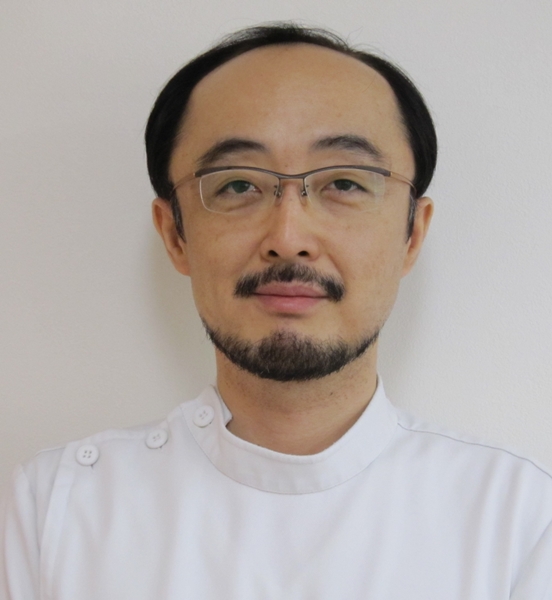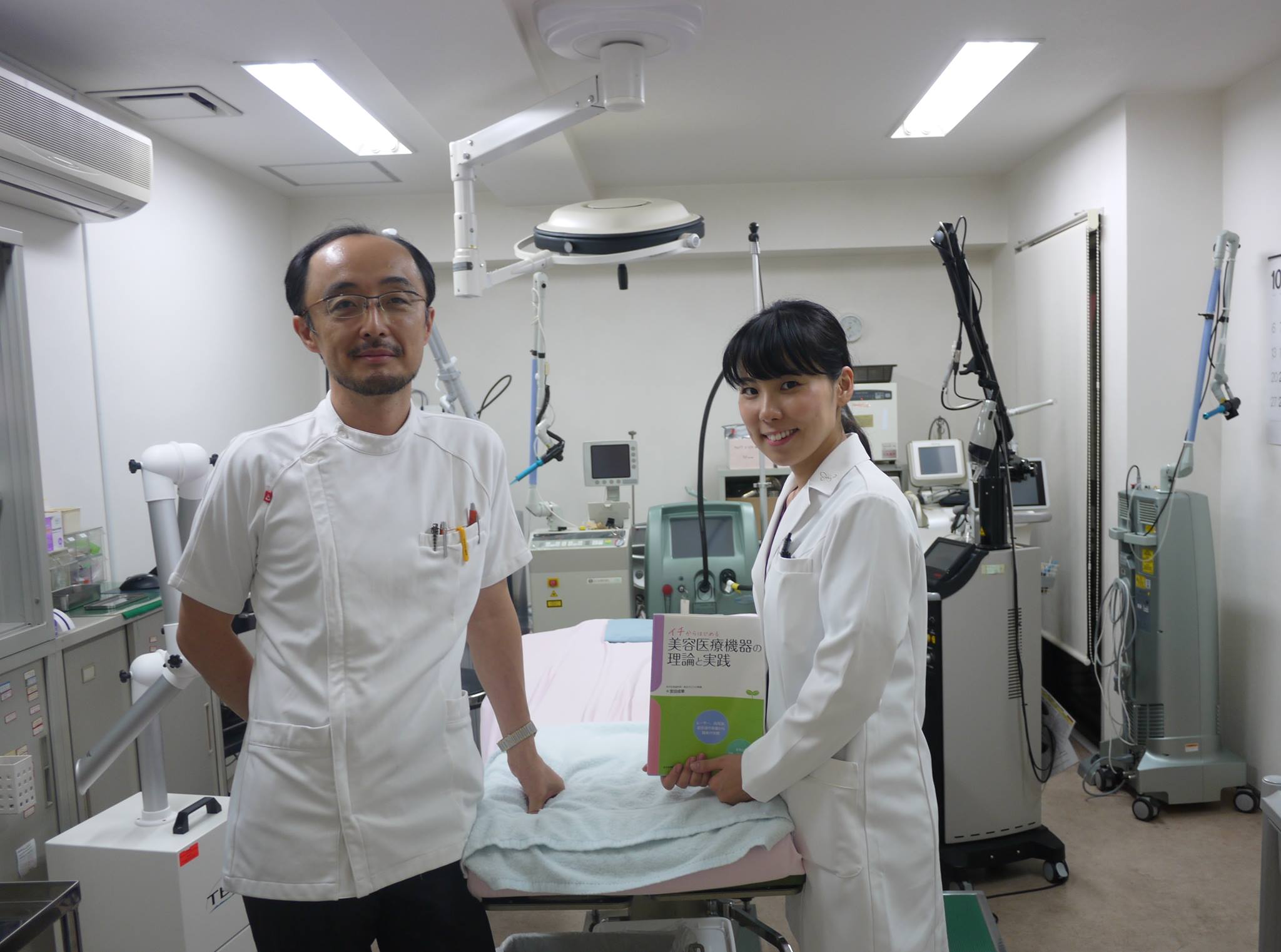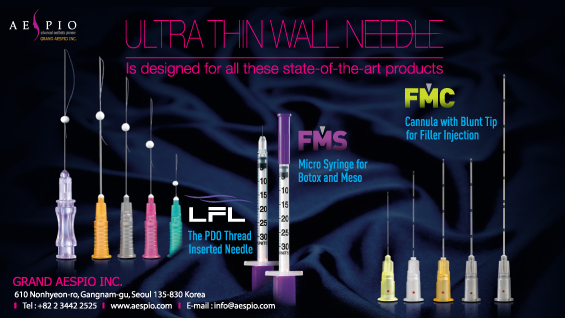
Dr. Miyata Nariaki (宮田成章) is a plastic surgeon and medical doctor in Japan. He is the medical director of Miyata Plastic Surgery and Skin Clinic in Nishi-shinbashi, Minato-gu, Tokyo (みやた形成外科・皮ふクリニック). He is a council member of Japan Society of Aesthetic Plastic Surgery (JSAPS) and is active in various academic societies such as Japan Association of Laser Medicine and Japan Aesthetic Dermatology Association, etc. He is a plastic surgeon by trade but is also well-versed in aesthetic dermatology. In Japan, he is one of leading authorities in dermatologic lasers. He is a well-known correspondent of Japan’s aesthetic dermatology for Korea and visits Korea at least every two months to communicate with Korean doctors. He has recently published a book titled Use and Practice of Aesthetic Medical Devices (美容医療機器の利用と実践). This book will be available in Korea this summer after translation and review.
[Advertisement] ULTRA THIN WALL NEEDLE – Manufacturer: AESPIO(www.aespio.com)
Which procedure is most commonly performed at your practice?
This is a difficult question to answer as patient demand becomes more varied. In fact, there is no one procedure that everyone wants. I have counted the number of procedures performed last month. The most numerous of them was RF (radiofrequency) procedures for rejuvenation. Especially, I have most often used Accent XL:Tenor and Thermage.
Which procedure are you most interested in lately?
I have recently purchased LEGATO2, a Pixel-RF and IMPACT system device produced by Alma Laser. I am also interested in FMLB (Focused Multiple Laser Beams) manufactured in Japan.

In your view, what is the most important aspect of aesthetic treatments?
It is, of course, the patient’s subjective satisfaction. The visible outcome is not as important. The key aspect is how much the treatment has lived up to the patient’s demand. Japanese patients are very conservative. They do not want drastic changes. Most of them desire subtle changes and tend to accept the aging signs as part of the natural process. They often ask that the outcome of the surgery to be natural so that other people will not notice. Some of them even say imperceptibility is more important than the actual outcome. On the other hand, some do want drastic changes. However, the change here is purely subjective.
What are the leading trends in Japan’s aesthetic market?
In Japan, the hyaluronic acid injection is currently very popular. Fractional laser is also consistently in demand. Body contouring is not a major trend yet. Many patients confuse body contouring with losing weight. The short thread lift that is very popular in Korea is performed only in patients addicted to plastic surgery. Recently, Allergan Japan is aggressively promoting Botox in Japan. And more and more people are becoming familiar with Botox. For your information, Botox is the only neurotoxin approved by Japan Ministry of Health, Labour and Welfare for use in aesthetic procedures. And Juvederm was also approved on March this year. Currently, there are no fillers approved by the Japanese health authority for aesthetic purposes except Juvederm.. Therefore, the Japanese doctors are privately importing these products under the responsibility of medical license.
You are known to visit Korean dermatology and plastic surgery practices often. What is the reason for the visits and what are your impressions?
I visit Korean hospitals and practices to observe new techniques and devices. Japanese doctors are just as conservative as their patients. They are wary of using a new device. On the contrary, Korean doctors competitively purchase new devices. Many aesthetic device producers of Korea ask me for consultation in novel procedures. I assume they find it difficult to predict their success in the Japanese market. It would be helpful to visit hospitals in the US or Europe as well but they are too far. Korea is close from Japan and I find it very helpful to share opinions with skilled Korean doctors.
What are the differences in plastic surgery practices between Korea and Japan?
As I have already mentioned, Japanese doctors are conservative. Japanese dermatologists shy away from aesthetic procedures. They focus on treating diseases and evidence. The trend in the field of Japanese dermatology is evidence-based medicine. But as you know, it is very difficult to find good evidence in aesthetic medicine. Because of this unique situation of Japan, plastic surgeons came to specialize not only in surgery but laser treatments. As far as I understand, the plastic surgeons of Korea perform surgery but Japanese counterparts are surgeons and aesthetic dermatologists at the same time. In Japan, we call the procedures performed by plastic surgeons aesthetic surgery. Japan has a lower number of osteotomy cases as Japanese patients do not want drastic changes. Surgeries are performed in secret and patients only want subtle changes.
-To be continued-
▶ Previous Artlcle : [Person of the Month] Dr. Nariaki Miyata Ⅱ




















